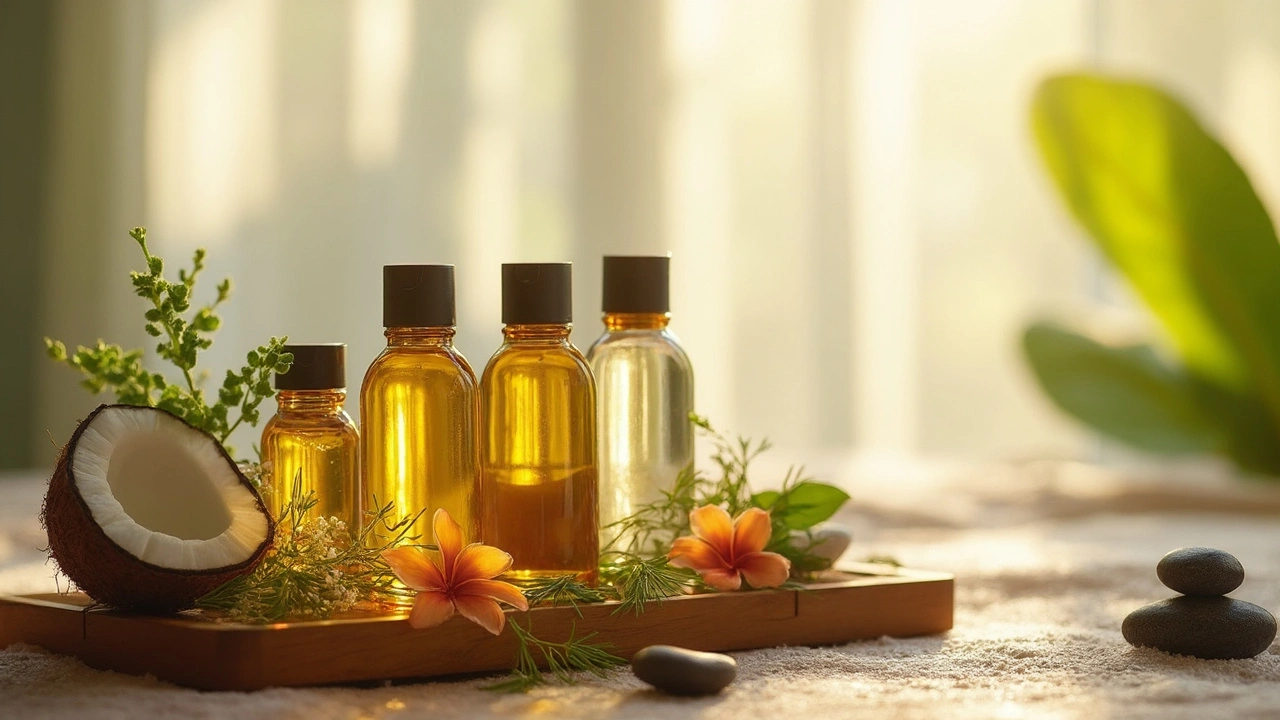Best Oils – What to Choose and Why It Matters
If you’ve ever stared at a pantry full of bottles and wondered which oil is the right one, you’re not alone. The truth is, different oils shine in different spots – some are perfect for high‑heat cooking, others calm skin, and a few even lift your mood. Below you’ll get the quick rundown on the top oils for the kitchen, the bathroom, and the wellness shelf, plus the basics on how to store them so they stay fresh.
Cooking Oils: Heat, Flavor, and Nutrition
When the pan is hot, you need an oil that won’t smoke up the kitchen. Extra‑virgin olive oil is a go‑to for low to medium heat and adds a fruity punch to salads and pastas. For searing, avocado oil handles 500°F+ without breaking down, making it ideal for steaks or stir‑fries. Coconut oil brings a subtle sweetness and works great in baking or tropical dishes. If you’re after a neutral taste and a high smoke point, reach for refined canola or grapeseed oil. All of these keep the flavor of your food front‑and‑center while delivering healthy fats.
Skin & Body Oils: Hydration Made Simple
For a splash of moisture after a shower, jojoba oil mimics the skin’s natural sebum, so it absorbs without feeling greasy. Sweet almond oil is a favorite for dry patches and works well as a carrier for essential oils. If you need a lightweight option for daytime, grapeseed oil slides on fast and leaves a satin finish. And for deep‑night repair, argan oil packs vitamin E and fatty acids that help reduce fine lines. Just a few drops on damp skin locks in water and gives you a smooth feel.
When you pick a skin oil, look for cold‑pressed, unrefined versions. Those retain the natural antioxidants that protect your skin from free‑radical damage. If you have sensitive skin, do a quick patch test—apply a drop on the wrist and wait 24 hours before using it all over.
Essential Oils: Small Bottles, Big Benefits
Essential oils aren’t meant to be eaten, but a few drops can lift your mood or help you breathe easier. Lavender is the classic calm‑down oil—add it to a diffuser or mix with a carrier oil for a bedtime rub. Peppermint wakes you up and eases tension when you rub a diluted dab on your temples. Eucalyptus clears nasal passages, making it a favorite during cold season. Keep them in dark glass bottles away from sunlight to preserve potency.
Remember, essential oils are super concentrated. Always dilute them (about 2–3 drops per teaspoon of carrier oil) before skin contact, and avoid using them around pets unless you’re sure they’re safe.
Storing Oils the Right Way
Exposure to light, heat, and air is the fastest way an oil goes rancid. Store cooking oils in a cool, dark cupboard; if you buy a bulk bottle, consider transferring it to a smaller, airtight jar. For skin and essential oils, keep the bottles tightly closed and stash them in a pantry or drawer—not the bathroom, where steam can break them down. A quick sniff test can tell you if an oil has turned: fresh oils smell bright, while rancid ones have a sharp, unpleasant odor.
By matching the right oil to the right job and storing it properly, you’ll get better flavor in your meals, softer skin, and clearer breathing. Start with a few versatile bottles—olive, avocado, jojoba, and lavender—and add more as you discover what works best for you.

